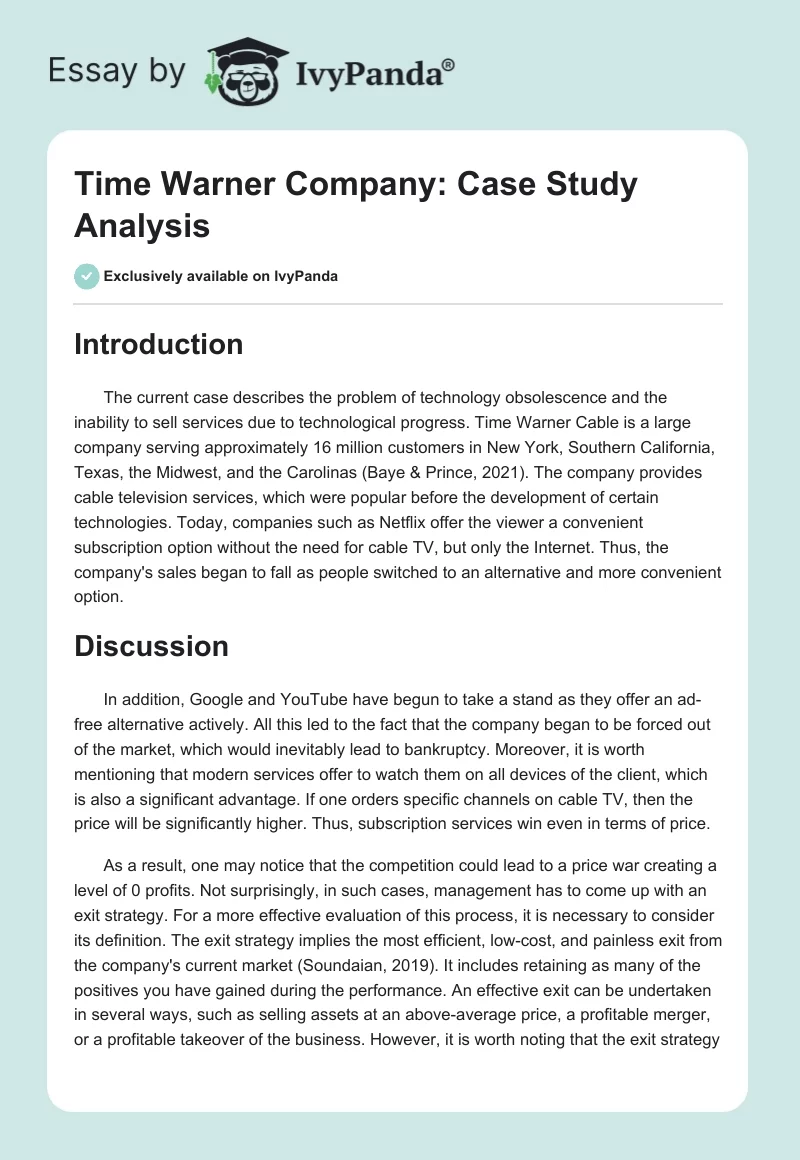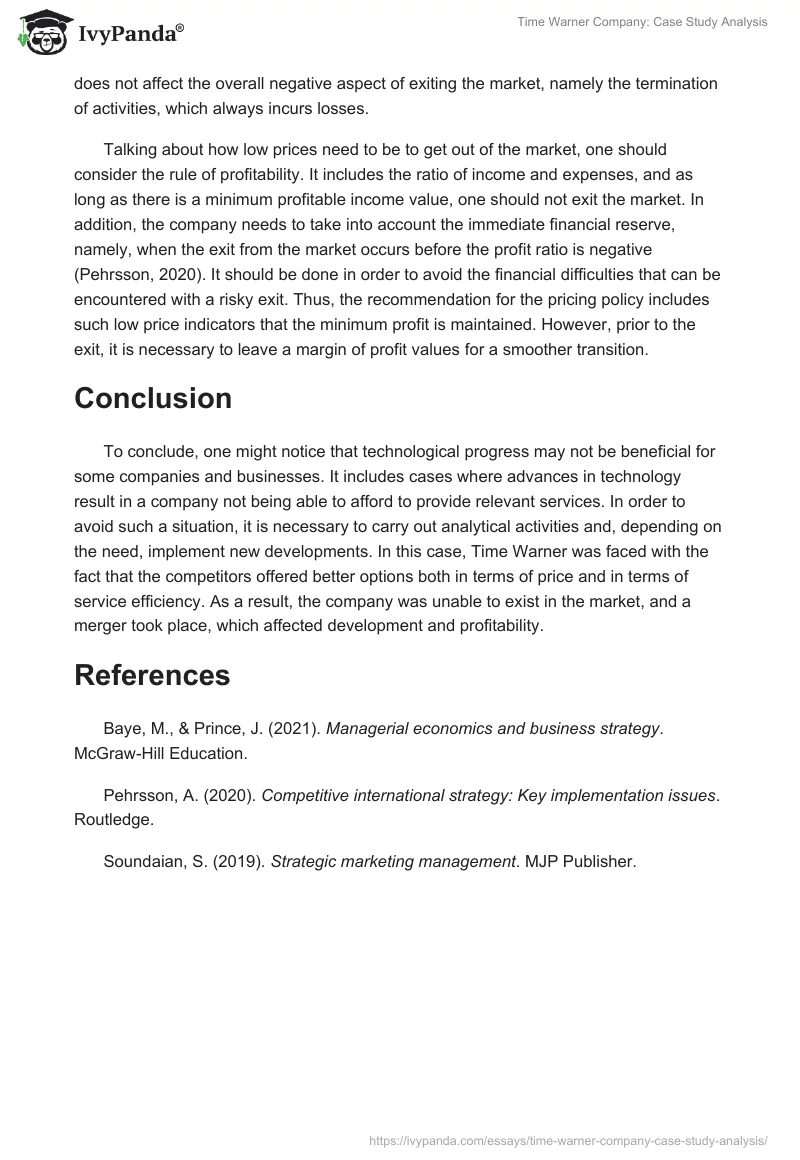Introduction
The current case describes the problem of technology obsolescence and the inability to sell services due to technological progress. Time Warner Cable is a large company serving approximately 16 million customers in New York, Southern California, Texas, the Midwest, and the Carolinas (Baye & Prince, 2021). The company provides cable television services, which were popular before the development of certain technologies. Today, companies such as Netflix offer the viewer a convenient subscription option without the need for cable TV, but only the Internet. Thus, the company’s sales began to fall as people switched to an alternative and more convenient option.
Discussion
In addition, Google and YouTube have begun to take a stand as they offer an ad-free alternative actively. All this led to the fact that the company began to be forced out of the market, which would inevitably lead to bankruptcy. Moreover, it is worth mentioning that modern services offer to watch them on all devices of the client, which is also a significant advantage. If one orders specific channels on cable TV, then the price will be significantly higher. Thus, subscription services win even in terms of price.
As a result, one may notice that the competition could lead to a price war creating a level of 0 profits. Not surprisingly, in such cases, management has to come up with an exit strategy. For a more effective evaluation of this process, it is necessary to consider its definition. The exit strategy implies the most efficient, low-cost, and painless exit from the company’s current market (Soundaian, 2019). It includes retaining as many of the positives you have gained during the performance. An effective exit can be undertaken in several ways, such as selling assets at an above-average price, a profitable merger, or a profitable takeover of the business. However, it is worth noting that the exit strategy does not affect the overall negative aspect of exiting the market, namely the termination of activities, which always incurs losses.
Talking about how low prices need to be to get out of the market, one should consider the rule of profitability. It includes the ratio of income and expenses, and as long as there is a minimum profitable income value, one should not exit the market. In addition, the company needs to take into account the immediate financial reserve, namely, when the exit from the market occurs before the profit ratio is negative (Pehrsson, 2020). It should be done in order to avoid the financial difficulties that can be encountered with a risky exit. Thus, the recommendation for the pricing policy includes such low price indicators that the minimum profit is maintained. However, prior to the exit, it is necessary to leave a margin of profit values for a smoother transition.
Conclusion
To conclude, one might notice that technological progress may not be beneficial for some companies and businesses. It includes cases where advances in technology result in a company not being able to afford to provide relevant services. In order to avoid such a situation, it is necessary to carry out analytical activities and, depending on the need, implement new developments. In this case, Time Warner was faced with the fact that the competitors offered better options both in terms of price and in terms of service efficiency. As a result, the company was unable to exist in the market, and a merger took place, which affected development and profitability.
References
Baye, M., & Prince, J. (2021). Managerial economics and business strategy. McGraw-Hill Education.
Pehrsson, A. (2020). Competitive international strategy: Key implementation issues. Routledge.
Soundaian, S. (2019). Strategic marketing management. MJP Publisher.


